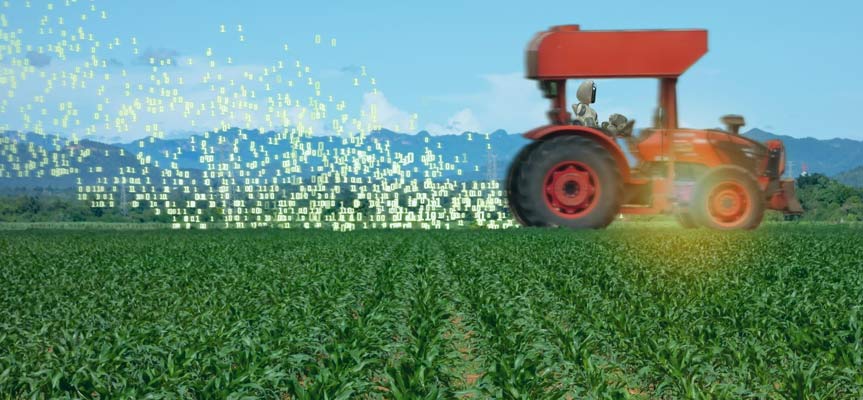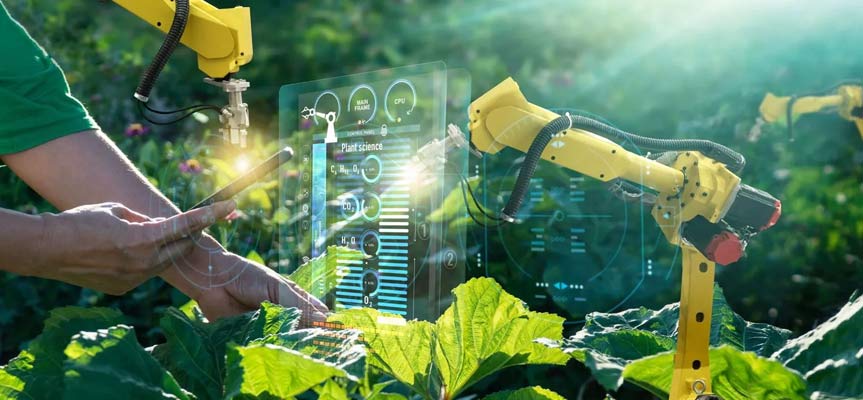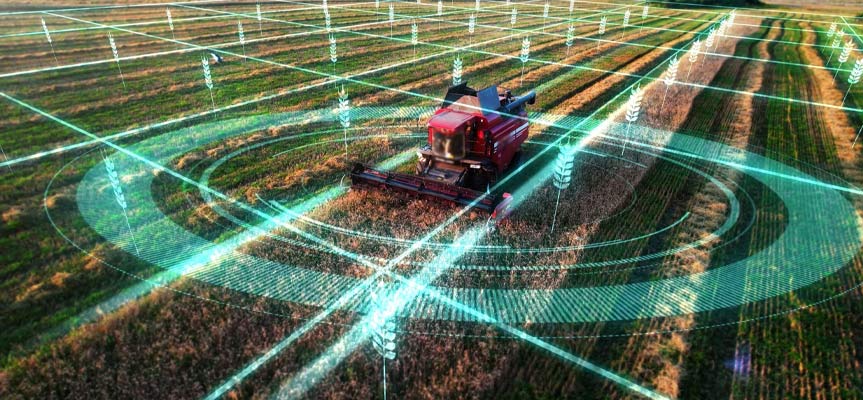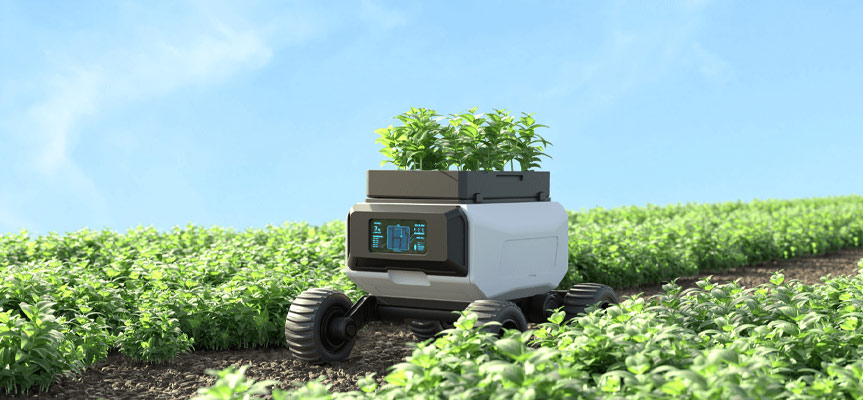In today’s world, where the global population is rapidly increasing and natural resources such as water and soil are under pressure, traditional agriculture is no longer sufficient to meet human needs. Imagine farmers who, with the help of advanced tools, can predict their harvest, optimize resource usage, and minimize waste. This is where artificial intelligence steps in, elevating agriculture to a new level. AI in agriculture not only boosts productivity but also helps protect the environment.
As someone who has studied modern technologies for years, I have witnessed how small farmers in remote areas have transformed their lives using these tools. In this article, we will take a deep dive into the role of artificial intelligence in smart agriculture and the food supply chain, with a focus on practical aspects that will be useful for business owners, startup founders, and researchers.
What is Smart Agriculture?
Smart agriculture refers to the use of digital technologies for better farm management. This approach involves collecting real-time data from soil, weather, and plants to make informed decisions. For instance, farmers can monitor soil conditions using advanced sensors and apply fertilizers or water only where necessary. This method not only reduces costs but also preserves natural resources.
In Iran, where climate challenges such as drought are common, smart agriculture could bring a major transformation. According to recent reports, the global smart agriculture market will experience significant growth by 2030, with AI playing a prominent role in this expansion.
Read more: Modern Wheat Farming
The Role of Artificial Intelligence in Precision Agriculture
Precision agriculture is one of the key applications of AI. This technology enables farmers to focus on specific areas instead of treating entire fields uniformly. For example, using satellite imagery and AI algorithms, areas in need of irrigation can be identified. In one real-world study, American farmers reduced water consumption by 25% with the help of AI.
This approach is not only cost-effective but also environmentally sustainable. For agribusiness owners, it means investment opportunities in tools that enhance efficiency. AI in precision farming analyzes big data and discovers patterns that humans alone cannot detect.
Looking deeper, precision agriculture includes technologies such as GPS and soil sensors. AI processes this data and provides practical recommendations. For example, in corn cultivation, algorithms can predict which part of the field is prone to pests and guide farmers for targeted spraying.
In developing countries like Iran, where resources are limited, this method can make a significant difference. Recent Iranian studies have shown that integrating AI with local tools can increase productivity by up to 20%. For startup founders, this field offers opportunities to develop applications that directly support farmers.

Internet of Things (IoT) in Agriculture and Integration with AI
The Internet of Things (IoT) in agriculture is a network of sensors that collect real-time data. When combined with AI, the results are remarkable. Sensors can measure soil moisture, temperature, and even nutrient levels, while AI analyzes this information.
For example, in a European project, farmers reduced energy consumption and increased yield using IoT and AI. This integration turns agriculture into an intelligent system that operates automatically.
Looking closer, agricultural IoT allows farmers to monitor fields remotely. Imagine drones equipped with IoT sensors capturing aerial images, while AI diagnoses plant diseases. In Iran, given the vastness of agricultural lands, this technology could solve logistical challenges. Studies show that integrating IoT with AI can improve prediction accuracy by up to 30%. For specialists, this opens research opportunities in new areas such as cybersecurity in agricultural systems.
Machine Learning in Crop Yield Prediction
Machine learning, a branch of AI, is highly useful for predicting crop yields. Algorithms analyze past data such as weather and soil to estimate future harvests. For example, in India, farmers used machine learning models to more accurately forecast rice production and prevent financial losses.
Crop prediction with AI not only benefits farmers but is also vital for the food supply chain.
Breaking this down further, agricultural machine learning uses big data to identify patterns. In a real-world case, AI models predicted crop yield with 90% accuracy using satellite imagery. This technology provides large agricultural companies with tools for better planning.
In Iran, where climate change has a major impact, such models could help farmers withstand drought. Researchers can focus on local datasets to build customized models.
Water Resource Management in Smart Agriculture
Water is the lifeblood of agriculture, and AI can optimize its management. Intelligent systems analyze sensor data to determine the timing and amount of irrigation. Smart water management reduces consumption while increasing yields.
For instance, in arid regions such as California, AI cut water usage by 20%. This approach is essential for countries like Iran, where water scarcity is a major challenge.
Digging deeper, AI uses weather and soil data to predict water needs. Smart irrigation systems deliver water only where necessary, preventing waste. Studies show this method strengthens agricultural sustainability. For startup founders, developing apps that assist farmers in water management represents a profitable opportunity. Personally, I believe this technology could change the future of Iranian agriculture, where water is the main challenge.

Reducing Food Waste with Artificial Intelligence
Food waste is one of the world’s major problems, and AI can help reduce it. Algorithms predict demand and monitor inventories to prevent food from being discarded. Reducing food waste with AI is not only economical but also strengthens food security.
For example, in one project, restaurants reduced waste by 50% with the help of AI.
Let’s dig deeper. AI uses cameras and sensors to track food and provide optimization suggestions. In the supply chain, AI makes ordering more precise and prevents excessive stockpiling. Reports show that this technology could save up to $127 billion. For business owners, investing in such systems promises quick returns. In Iran, where post-harvest waste is high, these tools could be game-changing.
The Food Supply Chain and Optimization with AI
The food supply chain, from farm to table, is complex, and AI simplifies it. Applications of AI in the food supply chain include demand forecasting, inventory management, and product tracking.
How does AI improve the food supply chain? By analyzing real-time data, it reduces delays and maintains quality.
In detail, AI optimizes transport routes and prevents food spoilage. In the food industry, AI controls quality and enhances safety. For researchers, this field provides opportunities to study AI’s impact on the agricultural economy. In Iran, where logistical challenges exist, such systems could strengthen exports.
Read more: Artificial intelligence transforming food industry future
Agricultural Sustainability and the Role of AI
Sustainable agriculture means preserving resources for future generations, and AI plays a key role here. AI’s role in sustainable farming includes reducing fertilizer and pesticide usage. AI technology in food production promotes environmentally friendly practices.
Looking deeper, AI improves farming methods and reduces pollution through data analysis. In one study, AI helped farmers implement regenerative agriculture. For specialists, this means focusing on green models. In Iran, with its environmental challenges, AI can help preserve soil.
Food Security in the Age of Artificial Intelligence
Food security refers to access to sufficient food, and AI strengthens it. How does AI enhance food sustainability? By increasing production and reducing waste. By 2025, AI will have a major impact on food security.
Looking deeper, AI predicts food crises and offers solutions. For companies, this represents an investment opportunity.
Real-World Examples of AI Applications in Agriculture
Globally, companies are using AI for smart machinery. In Iran, IoT projects on farms have increased productivity. Many innovation and creativity centers are working on developing AI technologies for agriculture and supporting farmers. These centers, focusing on innovation, provide Iranian farmers with tools that are adapted to local conditions.

Challenges and Limitations of AI in Agriculture
Every technology comes with challenges. Initial costs, the need for training, and cybersecurity issues are among them. However, with investment, these problems can be resolved.
The Future of AI in Agriculture
The future looks bright. The AI market in agriculture will reach billions of dollars by 2030. Integration with robotics will bring even greater transformations.
The Role of Innovation Centers in Advancing Smart Agriculture
Centers such as the Grownida Innovation and Creativity Center act as bridges between technology and farmers. They turn ideas into reality and provide support.
The Impact of Artificial Intelligence on the Agricultural Economy
AI reduces costs and increases revenues. In Iran, this could contribute to economic growth.
Conclusion
Artificial intelligence in smart agriculture and the food supply chain promises a sustainable future. From crop prediction to reducing waste, this technology is transformative. For those interested, I recommend reaching out to innovation centers like Grownida to learn about new opportunities.
FAQs
How does AI help agriculture?
AI improves decision-making and boosts productivity by analyzing data.
What are the benefits of smart agriculture?
Lower costs, resource conservation, and increased yields are the main advantages.
How does AI improve the food supply chain?
By forecasting demand and optimizing routes, it reduces delays.
What are the applications of AI in precision agriculture?
They include soil monitoring, targeted irrigation, and pest detection.
How does AI enhance food sustainability?
By reducing waste and increasing production, it improves access to food.

